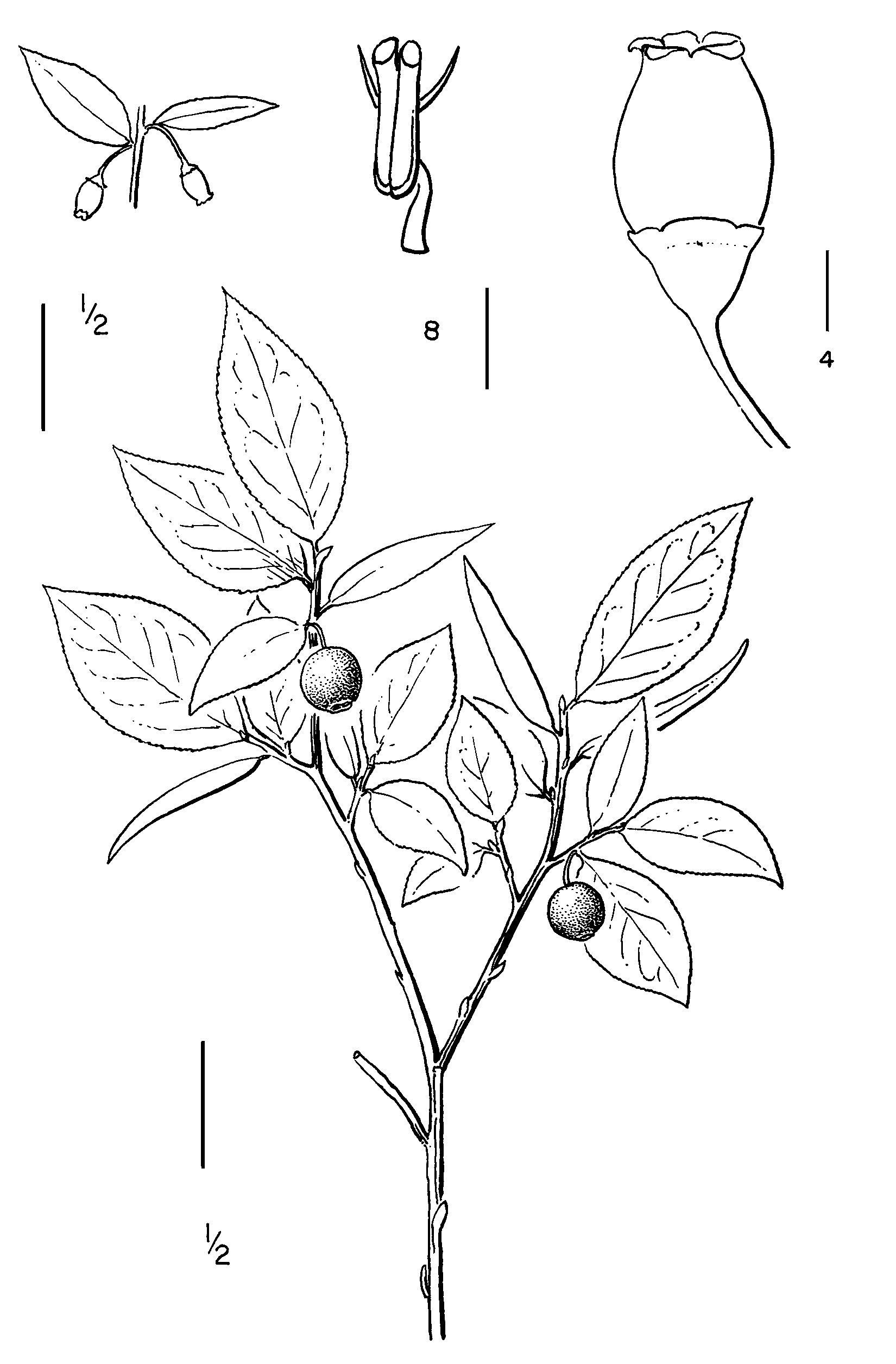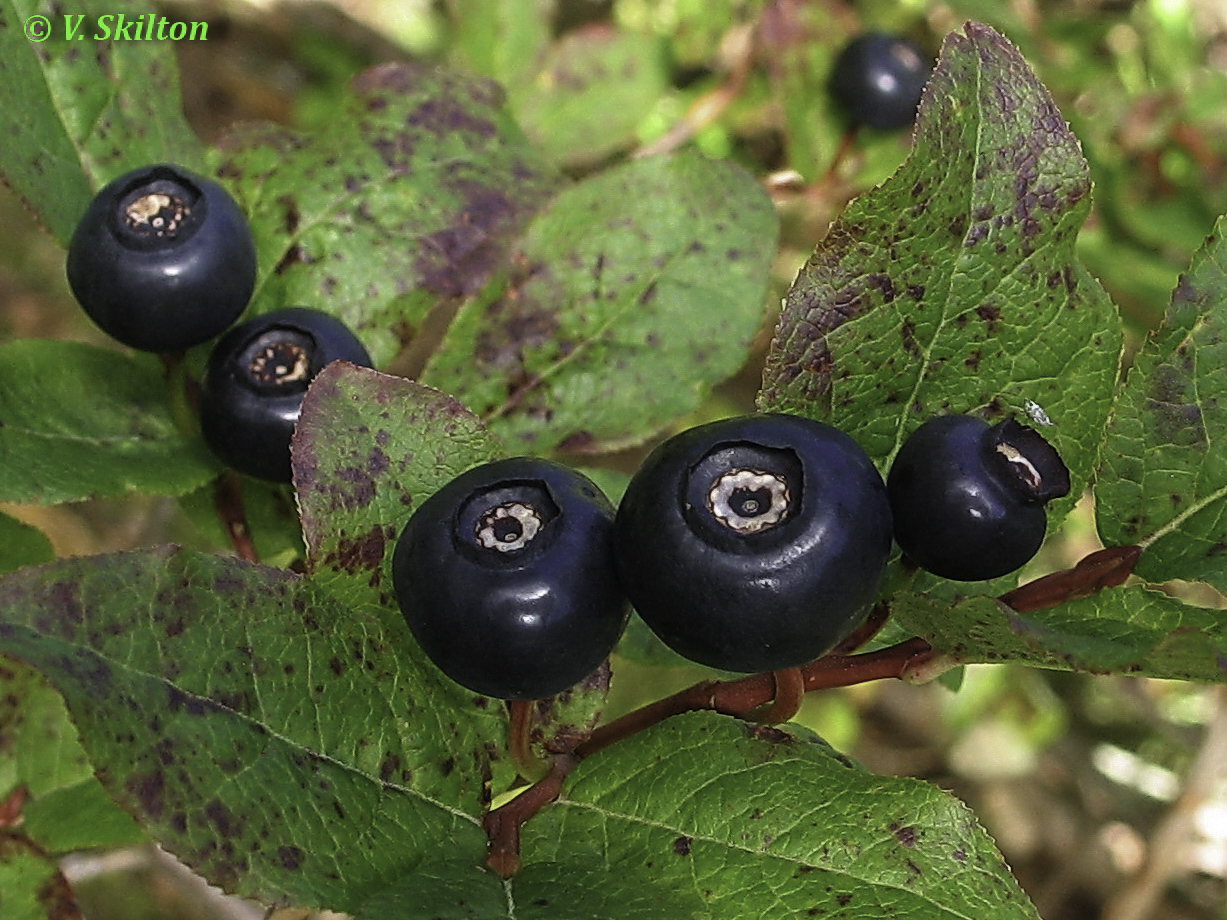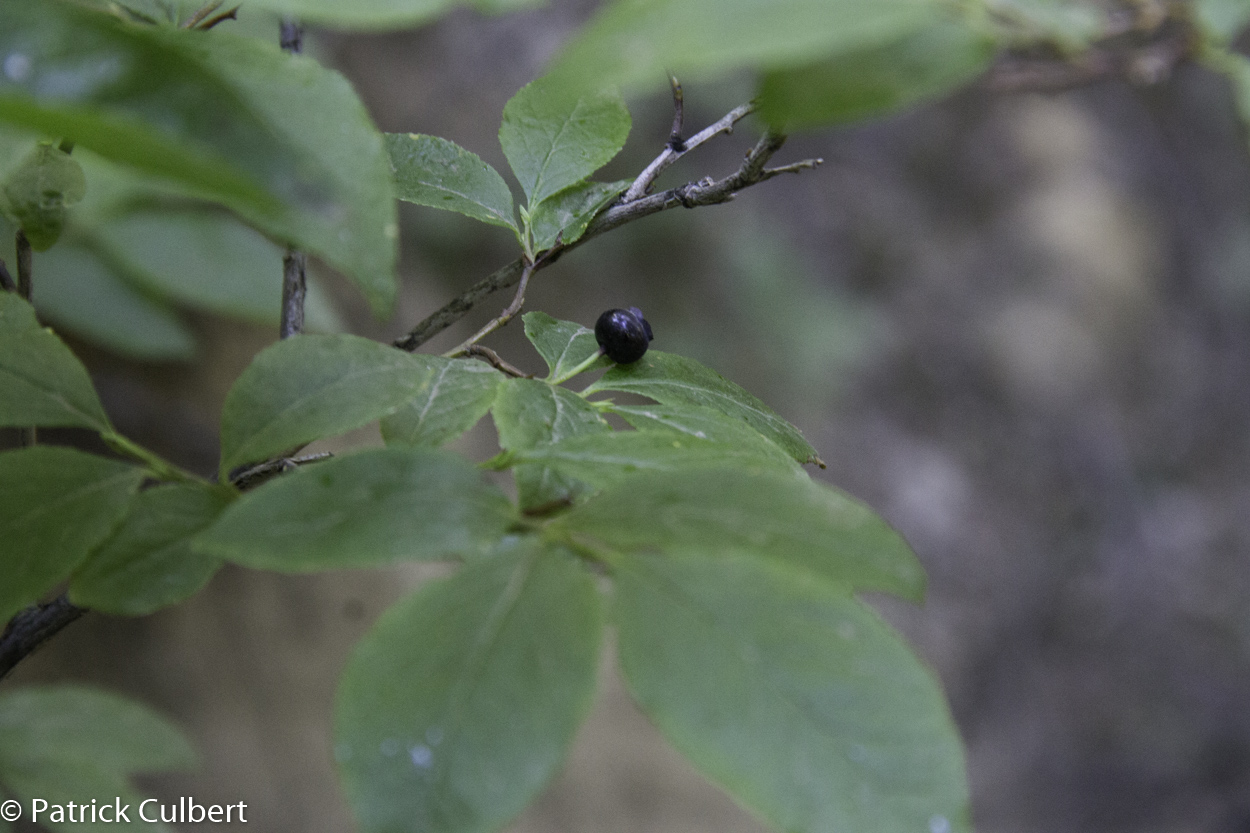Vaccinium membranaceum – black huckleberry
Common Name
black huckleberry
Family
Ericaceae
Scientific Name
Vaccinium membranaceum
Soil Moisture Regime (SMR)
- Moderately Dry (MD)
- Medium (M)
Soil Nutrient Regime (SNR)
- Poor (P)
Video link
Hitchcock, C. Leo, and Arthur Cronquist. Flora of the Pacific Northwest: An Illustrated Manual © 1973. Reprinted with permission of the University of Washington Press.
General / Habitat
- Shrub
- Common in dry to moist coniferous forests and some open areas, especially burned sites (can regrow from rhizomes after low-intensity fire)
- Middle to high elevations
Key Identifying Characteristics
- Form: Densely branched, up to 1.5 m tall, young branches yellowish-green and somewhat angled
- Leaves: Alternate, deciduous and thin, pointed at tip with a lance-like shape, margins finely toothed, turning red in the fall
- Flowers: Pinkish to yellowish, urn-shaped and borne singly in leaf axils
- Fruit: Purplish to reddish-black, lacking bloom, very tasty
Lookalikes
- If non-reproductive, the most reliable way to ID Vaccinium membranaceum is to look at the leaves for fine toothing along the margin and a lance-like shape ending in a point
- If bearing fruit, berries are dark, lacking in bloom, and flatter than Vaccinium alaskaense
Interesting Characteristics
- Berry is sold commercially in some areas
- Berry has historically been an important food source for many aboriginal peoples
External References
Sources
Douglas, G.W. et al (Editors). 1998-2002. Illustrated Flora of British Columbia, Volumes 1 to 8. B.C. Min. Environ., Lands and Parks, and B.C. Min. For., Victoria, B.C.
Pojar, J. and A. MacKinnon. 2014. Plants of Coastal British Columbia Including Washington, Oregon & Alaska. B.C. Ministry of Forestry and Lone Pine Publishing. Vancouver, B.C.




